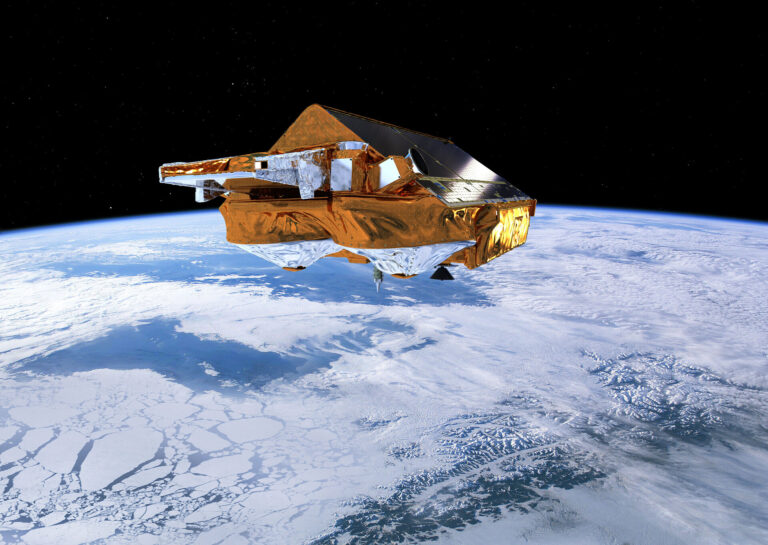For more than 10 years, the European Space Agency’s (ESA) CryoSat has been returning detailed information on how the height of the earth’s ice fields are changing. However, in a move designed to gain even deeper insight into ice conditions, the satellite’s orbit has been altered so that it can work in tandem with NASA’s ICESat-2 system.
ESA said that while CryoSat carries a radar altimeter, NASA’s ICESat-2 is equipped with a laser measurement system. Both instruments measure the height of ice by emitting a signal and timing how long it takes the signal to bounce off the ice surface and return to the satellite. Knowing the height of the ice enables scientists to calculate its thickness.
However, snow can build up on top of the ice and can hide the ice’s true thickness. While CryoSat’s radar penetrates through the snow layer and reflects closely off the ice below, ICESat-2’s laser reflects off the top of the snow layer. Blending simultaneous satellite laser and radar readings means that snow depth can be measured directly from space for the first time.
Knowing the depth of the overlying snow will improve the accuracy of sea-ice thickness measurements and improve researchers’ knowledge of how snow and ice surfaces, with different physical properties, scatter back the signal from the instruments.
The ESA’s CryoSat mission manager, Tommaso Parrinello, said, “The idea of having CryoSat’s orbit align with that of NASA’s ICESat-2 goes back some years now. It has taken a lot of planning and is a significant undertaking, something we haven’t done before. Aligning CryoSat with ICESat-2 is like having one satellite with two instruments.”
ICESat-2 orbits at an altitude of around 500km and CryoSat used to orbit an altitude of around 720km. Two weeks ago, flight operators at the ESA’s spacecraft operation center in Germany began firing CryoSat’s thrusters to raise its orbit by almost 1km to bring it into synch with ICESat-2.
Ignacio Clerigo, ESA’s CryoSat spacecraft operations manager, explained the intricacies of this operation, “CryoSat orbit was much higher and slower than ICESat-2, so we couldn’t align them by having them orbit in tandem. Instead, we raised CryoSat by 900m through a series of 15 precisely timed thruster burns. The two satellites will now overlap every 19th orbit of CryoSat and 20th orbit of ICESat-2.”
Since sea ice floats in the ocean, currents and wind move it around. Under normal circumstances, the two satellites would take measurements over the same location a number of hours apart, so it could be different ice under their normal orbital paths.
“By raising CryoSat’s orbit we find this sweet spot where every 1.5 days the two satellites will pass over areas of the polar regions around the same time. These few minutes of almost coincident measurements will be key for studying sea ice. CryoSat will remain in this orbit now until the mission is over,” Parrinello continued.
The ESA said this new information could help improve climate models, particularly for Antarctica. The models scientists currently use to gauge snow depth when calculating sea ice work reasonably well for the Arctic, but less so for the Antarctic.
Additionally, the new data could help tackle the difficult task of measuring sea ice in summer. In warmer weather, ponds of meltwater on the ice swamp the signal from CryoSat, but ICESat-2 has the precision to detect these ponds and differentiate between them and the breaks between floes of ice.



